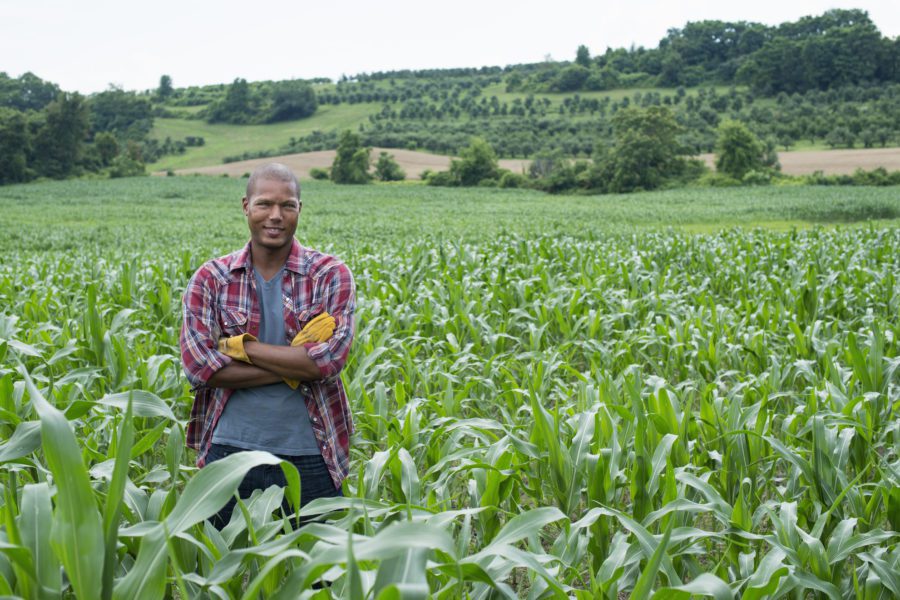Family farms help feed America. According to the USDA, there are more than two million farms in the U.S., and they vary greatly, with gross revenue anywhere from $1,000 to more than $5 million. More than 98 percent of all farms in the U.S. are family farms, and they account for 88 percent of all production. Whether you’re talking about a hobby farm, a multimillion-dollar commercial operation or something in between, there are risks associated with managing a farm, no matter its size.
Farms and ranches face numerous risks of different types. Some of the most notable risks come from natural disasters, including wildfires, floods, droughts and severe storms. In some areas, increased wildfire losses have contributed to insurance challenges.
Having too much or too little water can be detrimental to farm and ranch operations, resulting in lower yields, crop loss and reduced revenues. Farm suppliers may also face lower sales due to drought. Flooding is also a serious concern. The USDA says that flooding can cause crop loss, contamination, soil erosion, equipment loss, debris deposition and the spread of invasive species.
In recent years, costly natural disasters have become more common in the U.S., with substantial consequences for agriculture. The National Oceanic and Atmospheric Administration says that there were 20 separate weather and climate disaster events with losses exceeding $1 billion in the U.S. in 2021. These events include wildfires, tornado outbreaks, tropical storms and hurricanes, flooding, hailstorms, winter storms and other severe weather.
Here’s a look at the farm and ranch insurance essentials for this vital industry.
Coverage for Crops and Livestock
Disease and pests cause additional risks for farmers and ranchers. The Food and Agriculture Organization of the United Nations estimates that 20 percent to 40 percent of global crop production is lost to pests. Plant diseases result in global economic losses of around $220 billion each year, and invasive insects result in losses of around $70 billion.
Livestock can also be susceptible to disease, which is why livestock insurance is essential. Recent outbreaks of bird flu have been especially damaging for poultry farmers. According to Pew Charitable Trusts, bird flu has been spreading across the U.S., resulting in the deaths of millions of chickens, turkeys and wild birds and prompting states to halt poultry exhibitions and public sales of birds. The Guardian reports that one egg factory culled 5.3 million chickens and then laid off most of the staff. More than 22 million birds have been culled in efforts to contain the spread of bird flu.
Crop insurance can protect farmers and ranchers from losses resulting from natural disasters. According to the Insurance Information Institute, crop insurance can be either crop-hail insurance or multiple-peril crop insurance. The vast majority of farmers who buy crop insurance decide to buy multiple-peril crop insurance, which covers losses from destructive weather, disease, drought, flooding, fire and insects.
Crop revenue insurance can also help farmers facing low yields or declines in the prices of agricultural commodities. When prices and yields fluctuate wildly, the year-to-year survival of operators can be threatened, so this is coverage to consider.
Liability Coverage for Farms and Ranches
Farms and ranches can be hazardous locations. If someone is injured – even if that person is a trespasser – the operator may face liability related to bodily injury and medical expenses.
Liability can also arise from the products that are produced on the farm. For example, if food items are linked to outbreaks of foodborne illness, the operator may face expensive recalls and product liability.
General liability and product liability coverage is therefore important for ranchers and farmers. Farm operators may also want to consider excess liability coverage, which can provide additional coverage for high-cost claims, helping policyholders avoid out-of-pocket costs.
Coverage for Farm Machinery
Farms and ranches depend on expensive equipment. When that equipment breaks down, farming operations may need to pause. If this happens during harvest, the lost revenue can be substantial. Mechanical failure of farm equipment is not typically covered under standard property insurance policies. However, coverage is available.
Farm and ranch equipment breakdown insurance can cover the cost involved in repairing or replacing various types of equipment, including tractors, heating and cooling units, irrigation systems, milking equipment, feeding systems, well pumps, conveyors and generators.
Farmers and ranchers who rent farm equipment should also consider care, custody and control insurance. Standard liability insurance policies typically exclude damage to rental property in your possession, but supplemental coverage is available to protect you from this risk.
Farm House and Outbuilding Coverage
In addition to protecting crops and livestock, farm and ranch operators also need to think about coverage for the various buildings on their property. This can include buildings and structures that are critical to operations, such as storage sheds, packing houses, stables, barns and nut hullers.
In many cases, this will also include the owner’s personal residence. Instead of buying a separate homeowners insurance policy to cover household personal property, farm and ranch owners may be able to secure coverage as part of their farm and ranch policy package. This may even be possible if the house is located in a separate area or if there are multiple dwellings. Packaging coverage can simplify insurance and may result in savings, so this is an option to consider.
Commercial Auto Insurance
According to research published in the Open Journal of Safety Science and Technology, farm vehicles often need to share the roads with other vehicles, even though they are not primarily designed for road transportation. Although crashes tend to occur at a comparatively low frequency, when they do occur, the rate of injuries and fatalities is higher than the rate for all crashes.
Standard auto insurance typically excludes commercial use, and accidents can result in injuries and expensive lawsuits, so it’s important to carry commercial auto insurance coverage.
Securing Farm and Ranch Insurance Essentials
In some cases, you may be able to simplify the insurance buying process if you buy farm owners’ insurance coverage, a package designed specifically for farmers, ranchers and stable owners that bundles common coverage types, such as homeowners’, commercial property and commercial liability policies.
There is great variation among agribusinesses, both in size and scope. As a result of these differences, the insurance needs of various farms and ranches can vary greatly. In addition to the coverages listed here, farmers may require:
- Hunting lease and game ranch coverage
- Tack and equipment floater insurance
- Workers’ compensation insurance
- Other types of coverage based on activities and exposures
The terms and limits that you need can also vary significantly. Additionally, various farm and ranch insurance companies have different offerings, and you need to find the insurance company that offers the right match for your needs. It’s important to discuss your specific exposures and coverage needs with an insurance professional so you can secure appropriate agricultural insurance.
Higginbotham: Rooted in Your Priorities
Higginbotham offers farm and ranch insurance coverage options designed to meet the needs of your agribusiness. We understand the farm and ranch industry, and we offer insurance to cover your dwelling, equipment, stock, barns, fencing, tools, tack and more.






